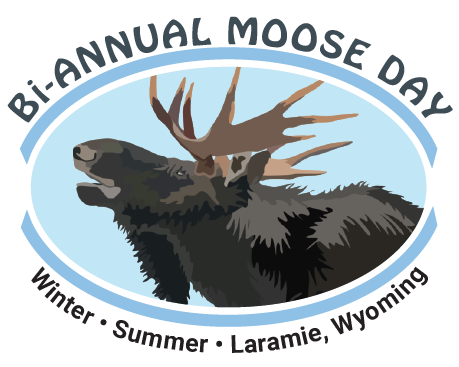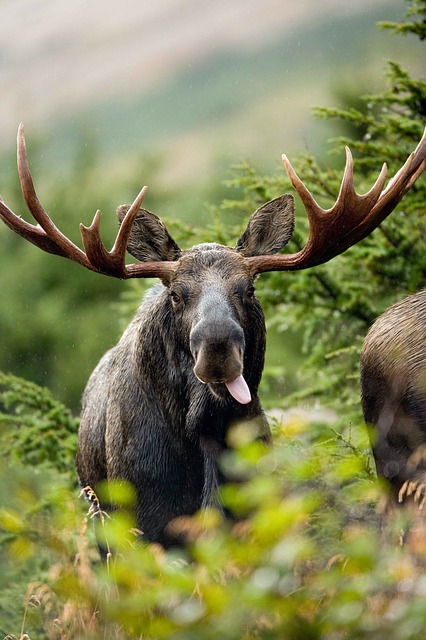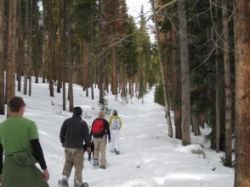-

Bi-Annual Moose Day
Community members and scientists working together to create a picture of the moose population in Laramie wildlife areas.
Moose Day

Project Navigation:
Mission
Moose populations, summer and winter range, and reproductive success (how many calves are born and survive each year?), aren't well understood in this area of Wyoming. Researchers at the University of Wyoming use the data collected during Moose Day to inform our knowledge of the population dynamics of Laramie-area moose.

Moose Day

Summer Moose Day is typically held in July, and Winter Moose Day is typically held in January or February. Summer Moose Day routes include hiking or driving routes; for Winter Moose Day, be prepared to strap on your snowshoes or skis!
The idea for Moose Days came from Nature Mapping Jackson Hole, which has been surveying for moose in this same way since 2009. In Jackson, moose congregate in town where winter habitat is ideal, which makes surveying for moose both relatively easy and very rewarding. In the Laramie area, moose are much more spread out, so it takes a large group of dedicated and enthusiastic volunteers to make this happen!
How it Works!
Adopting a route is simple. First review the routes corresponding to the season in which you are participating, Summer or Winter, and select two routes that are appropriate for you; a first and a second choice. Three different groups can sign up for the same route; after that, the route will be marked as adopted. This replication helps make the collected data more robust for analysis!
Once you identify a first and second choice route, head to the registration form found at the link in the right-hand sidebar (the link is unavailable when registration is closed).
Routes are awarded as they are selected, on a first come, first served basis. You will receive an email verifying your registration and the route (either first or second choice). In the unlikely case that both of your routes were selected before your registration we will contact you directly to let you select a third option.
How will the data be used?
The Moose Day data is managed by researchers in the University of Wyoming Department of Zoology and Physiology. Researchers use the collected data to help build a better picture of the detectability of moose, which will lead to more accurate population estimates in the long term. That's because, despite their size, moose are difficult for wildlife managers to survey utilizing traditional methods due to their preferred habitat. Summaries of the collected data are provided to all volunteers, and any additional analysis resulting from the data will be posted here.
Coordinated and Sponsored by:
Coordinated by the UW Biodiversity Institute and the University of Wyoming Department of Zoology and Physiology.


